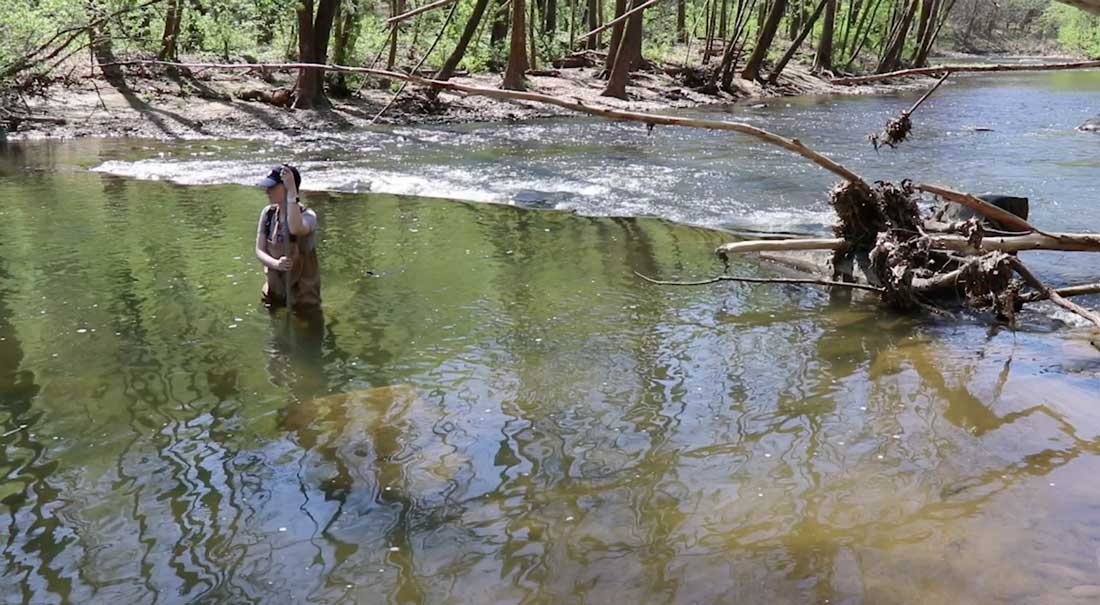Medill News Service journalist Mollie McNeel is writing a series of stories from embedded reporting with field researchers for the Smithsonian Environmental Research Center in Maryland.
By Mollie McNeel
Medill Reports
May 9, Potapsco River, Maryland. – I am out here standing waist deep in the middle of a roaring river, straddling a net while the tail end trails behind me catching sediments that will be used to detect river herring.
Kim Richie, the SERC research technician I am assisting today, yells from the banks, “You have five minutes of standing there so get comfortable!” I don’t mention that the cold water is slowly finding its way through my full-body “waterproof” waders. Instead I just stand there waiting for the sediments to collect and my right boot to fill with river water.

Today we are traveling to 10 different sites along the Potapsco River taking samples that will determine whether river herring, fish that spend the majority of their life at sea but return to freshwater to spawn, are present in each section of the river. To do this, we conduct three different tests: sediment collection, eDNA, and sight.
Sediment collection requires someone (me) to go stand in the middle of the river while a long triangular net flows behind collecting plant leaves or branches, eggs and more – sediments. Back at the SERC lab, research assistants will search through each of the samples under a microscope, carefully looking for hints that fish are in the area.
“You never know what you’re going to catch in these nets,” explained Richie. “Sometimes we catch little fish but, by the time we realize it, it’s too late.”
eDNA, or environmental DNA, is a fascinating technique that requires little work in the field. We simply fill up a bottle of water at each site. The water is later tested in the lab looking for DNA indicators of river herring.
“It’s a process that is able to detect any gametes, urine, scales, really anything that genetically shows they are somewhere in the water,” explained Richie.

Finally, we just look to see if we could spot any fish. Unfortunately, we never spotted any fish but that wasn’t exactly a surprise to Richie. “River herring don’t come out during the day,” she said. “Since the Potapsco is so clear and shallow, it makes them easy targets for prey, so they hide out in deep and dark holes until nighttime.”

The river is cut by a dam that is blocking off a majority of the stream and limiting populations of two different kinds of river herring—Alewives and Blueback. Later this summer, the dam will be completely removed allowing the fish to swim further up the river to spawn. We looked at four sites above the dam and six below so that after the dam is removed researchers can tell that they have in fact, migrated farther upstream than ever before.

